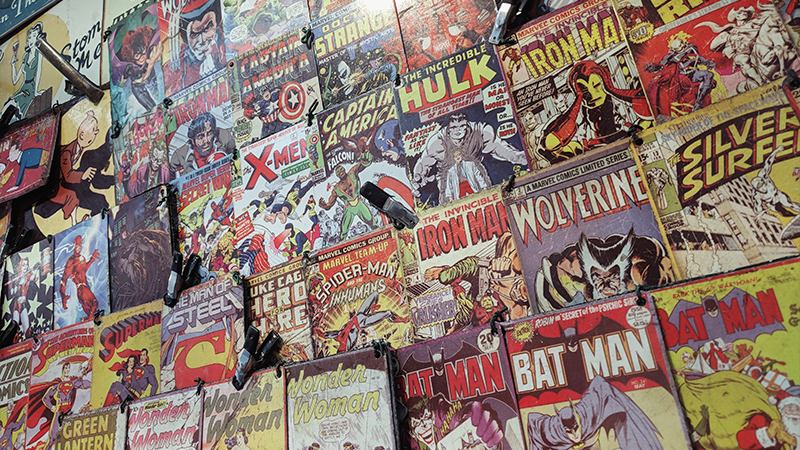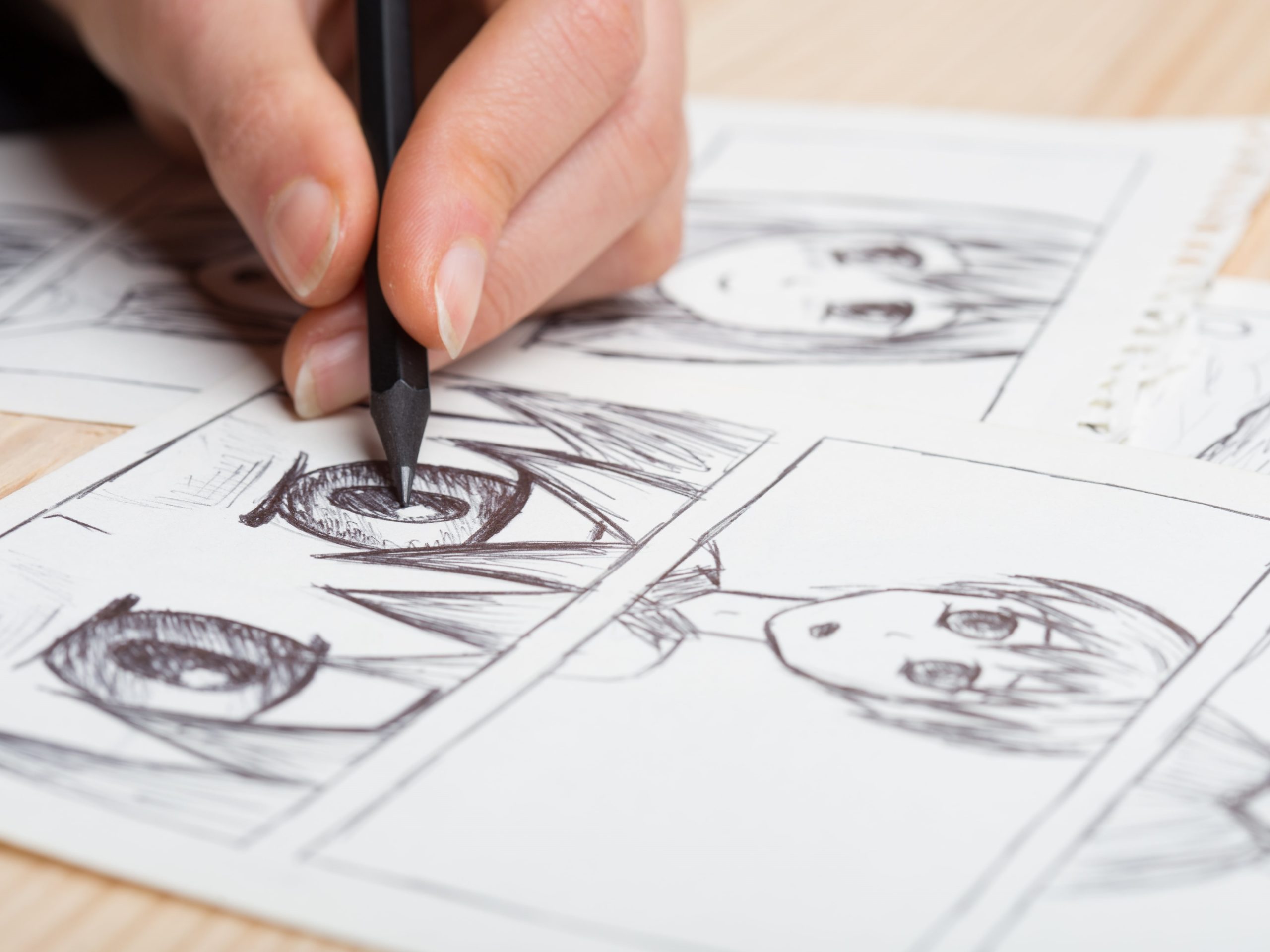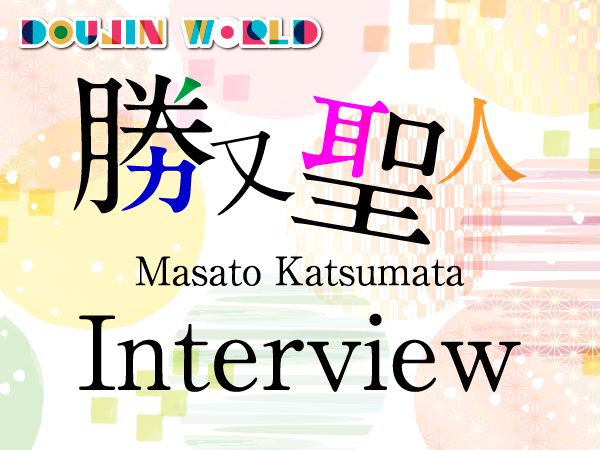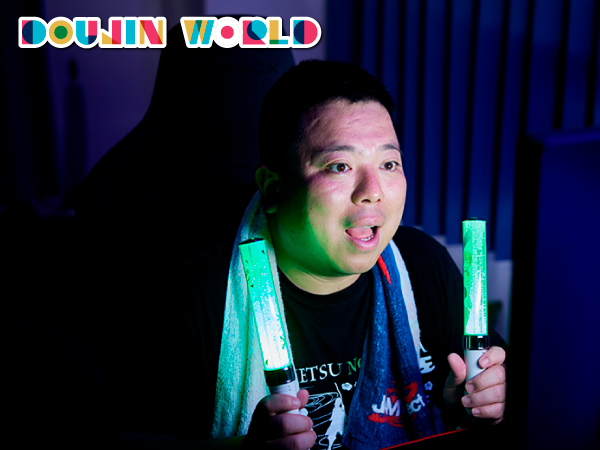2020.04.03
What is ” Doujin” ?
1.First Things First: What is “Doujin”?
Welcome, fellow doujin!
What is doujin, you say? In general, “doujin” is known as the fan-created works of pop culture phenomenon like anime, manga, and video games. But the origin of the word is actually “a gathering of people who share similar hobbies or goals.”
Doujin come in many forms, such as fan clubs, hobby groups, and study societies. In Japanese, we also have a similar word, “kessha”, which has lately fallen out of use. Essentially, it means “a group of people who have come together to accomplish a unified goal.”
For the Japanese, “kessha” is a bit of an inspiring word that makes our hearts dance, which is pretty special. And most likely, if you’ve stumbled upon this site, you might also feel that special something the word instills in us.
In short, a “doujin”, like “kessha”, is someone, or a group of someones, who share the same hobbies or goals.
https://en.wikipedia.org/wiki/Dōjin

But we’ve digressed a bit. Nowadays “doujin” refers more to the idea that, whether it’s about fan works or original productions, there are always like-minded people out there to share our thoughts and goals with. In other words, “doujin” represents a bond. It’s knowing every detail about a single character from a single anime, and it is also loving something on a broader scale. When we speak of “doujin”, we mean both and everything in between. In fact, you who have stumbled upon this site is a doujin, and so are we!
You would have never thought a discussion about doujin would be so philosophical, would you?
But we don’t intend to go on and on about definitions and idealisms. From here on out, we want to dive deep into the history and culture of doujin, of its problems and strengths. But first, so that we can come to a common understanding, whether it’s a deep or basic understanding, let’s review 10 points that we doujin must all agree to:
Ten Agreements Among Doujin
I. You must have love for the works and the ideas behind them
II. You must love the friends who share your love
III. Accepting that love is different for everybody is also love
IV. You must understand that love does not yield a profit
V. Our love is nothing to be ashamed of
VI. We do not force our love on others
VII. We must not forget our respect for the original works in our fan works
VIII. Breaking the law and and sharing a doujin’s work is a violation of doujin culture
IX. The creator of the work as well as those who appreciate the work are all doujin
X. The world is full of doujin
Now that we all agree to follow the principles of the Ten Agreements, let’s dive right into the topic at hand. However, what we present here is only the basics of doujin culture. If you want to know more than what we’ve shared with you, we encourage you to dive even deeper into the world of doujin for yourself.
2.When Samurai Discarded Their Swords for Pens: Japan’s First Literature Doujin?!

When the Edo shogunate fell and Japan was at the height of its “civilization and enlightenment” period of the Meiji era, Japan’s first ever doujin group formed when the literary society Kenyūsha was founded with the novelist Kōyō Ozaki at its center. The goal of the society was to aim for the betterment of literature, but for fun, not for profit.
The members included revered novelists like Bimyō Yamada, Bizan Kawakami, and Sazanami Iwaya. The name “Kenyūsha” implies the idea of being “friends forever”, so it may not be an exaggeration to say that Kenyūsha was not only Japan’s earliest doujin society, but also it’s the best representation of doujin culture.
In May 1885, Kenyūsha formed the literary magazine Garakuta Bunko, which became the first of Japan’s “Doujinshi”, or self-published hobby magazines.
Though Kenyūsha dissolved when Kōyō Ozaki passed away, doujin culture continued after his death. Other doujin societies published more doujin magazines, including Araragi, a magazine about Japanese tanka poetry, and the literary magazine Hototogisu, to which famous authors like Masaoka Shiki and Natsume Soseki contributed.
We can’t tell you how disappointed we are that no one knows that these authors, who were famous enough to appear on Japanese paper money, were active doujin.
In the 1910s, though doujinshi were still primarily about the literary arts, soon enough artists were beginning to take part, too, and doujinshi like the Shirakabaha were born.
Let’s return to the present. Nowadays, sometimes the display and sale of doujinshi is referred to as a “battleground”.
Perhaps that’s because, when swords were outlawed in the Meiji Period, the samurai who lost their purpose in life found a new battlefield in the world of doujin culture. The samurai spirits of the Edo period still live on and fight on within the men of present-day Japan, only they have exchanged their swords for anime T-shirts.
3.New Era of Doujin after the War? From Literature to Art: The Rise of Manga

We probably don’t have to explain to you what manga is, but we’ll give you a little bit of its history.
Japan’s oldest manga, or comic, is from the Heian Period (between 794 and 1185): the Chōjū-jinbutsu-giga, the famous set of picture scrolls depicting anthropomorphic animals. Later, in the Edo period, “giga”, or “cartoons”, began to be circulated to the masses, and ukiyo-e woodblock prints also developed, such as Katsuchika Hokusai’s Hokusai Manga. At the end of the Edo Period, a manga magazine called Japan Punch was circulated around the foreigner settlements of Yokohama, and this is believed to be the origin of Japan’s present day manga magazines. After that, comic culture from overseas became integrated into Japanese manga styles, and brushes were exchanged for pens, cartoons turned into story manga, and eventually the manga we know and love today came to life.
The establishment of manga, which has become a staple genre of doujin culture today, was meant to be. Once the Meiji Period came to a close, Japan embarked upon a series of wars with the rest of world.The First Sino-Japanese War, the Russo-Japanese War, then World War I; as the Taisho and Showa periods passed, Japan continued its attempts to conquer the world. And then there was World War II…
Everything was burned, everything was lost, everything was destroyed. Adults could only grit their teeth and bear it. Times were so hard, children likely couldn’t even cry.
Among all the devastation, one simple form of amusement that became popular was manga. Readers could empty their minds and travel to a different world…have their dreams come true…
Doujin culture resumed in 1946, after the end of World War II. Through the publication of the doujinshi The Manga Man rose the Japanese manga god Osamu Tezuka. Young girls and boys everywhere fell in love with manga, and as Japan recovered in the decades after the war and began to enter a period of rapid economic growth, the science fiction manga magazine S-F Magazine brought a new shock to the country.
During this time, countless doujin clubs were founded as young sci-fi authors all strove to make a name for themselves in this new genre. Among those were Shotaro Ishinomiya, author of Kamen Rider and Cyborg 009, and Fujio F. Fujiko, who created Doraemon and Ninja Hattori-kun. Numerous eminent figures in the manga industry like these got their wings from the world of doujin.
Then, in 1962, sci-fans (or sci-fi doujin) attended the first sci-fi convention in Japan, held in Meguro, Tokyo. 180 people gathered to exchange opinions and information, and a new kind of doujin club was born.
As you know, science fiction is a product of science. Ordinary people would enjoy the fantasy of it and move on, but researchers began to throw all of their efforts into replicating the worlds they saw in science fiction stories with their own research, and soon enough, the scientific worlds that could only have been found in books and manga began to appear in moving pictures. With the 1968 film 2001: A Space Odyssey, the sci-fi community became even more fanatical. The doujin clubs founded in this era soon evolved into anime companies, and the mediums of manga and anime steadily began to merge.
4.The Birth of the World’s Biggest Doujinshi Convention: Comiket

Tokyo Big Sight, where Comiket is held
While doujin culture saw continuous rapid changes with the times, at the same time, Japan was constantly at war. But the battles fought after the end of World War II, did not need any military might.
As we said before, the original meaning of “doujin” is “a person or group of people who share the same interests or goals”. After the war, the many doujin clubs that formed had their own goals and their own forms of thinking, and of course, there were going to be conflicts. Perhaps for doujin culture to continue to evolve, there needed to be a little bloodshed.
This was something that was bound to happen.
On December 21, 1975, the first ever doujinshi seller’s convention “Comic Market”, also known as “Comiket”, occurred.
The manga critic club “Meikyū” founded the event, and various manga doujin clubs and university research clubs participated. They exhibited their critiques and thoughts on existing manga to the 700 manga fans who attended.
As we said before, among the Japanese people, starting with Comiket, doujinshi selling conventions became a new battlefield of thoughts and ideas…
Doujin managed to continue to change and evolve as they battled…
And in the end, they created a brand new battlefield for themselves, where no blood would be shed.
Then, as science advanced, so did printing technology. By the 1980s, individuals were able to print their own works, and printing became affordable.
When doujin was originally a gathering of like-minded manga authors who shared a goal, as manga gained popularity and more authors were born, and science improved and circulation of manga expanded, people began to come together to critique those works. Soon critiquing turned to, “Anyone can make manga”, and the foundation of the doujin culture of today solidified in the battlefields of Comiket.
The current Comiket is run by the Comic Market Preparatory Committee (ComiketPC), and it’s the largest doujinshi selling fair in the world. It’s held every year in August and December at Tokyo Big Sight. At the December 2019 Comiket (known as C97), there were about 750,000 people recorded in attendance. Compare that to the 950,000 people originally expected to attend a day of the Tokyo Olympics, and it’ll become clear that Comiket is a huge event that’s on an international scale.
What’s more, there are many other doujinshi sale fairs held all over the world, not just Comiket, and not just in Japan.
Within Japan, there are two kinds of doujinshi sale fairs: those that celebrate all genres, and those that are limited to celebrating only one thing, such as a single anime or video game, or original literary works.
5.The Evolution of Doujin to Include Other Modes of Expression
- Cosplay

As the focus of anime, manga, and other forms of media became their visual aspects, so, too, did doujin expressions of fandom expand from writing and drawing. The desire to transform oneself into the thing one loves was born with cosplay. The word “cosplay” is a portmanteau of the words “costume” and “play”, and the idea is said to come from Europe and the United States, where people would put on period clothing and put on plays or role-play.
In Japan, the word seems to have also been used to refer to the study of clothing after World War II, but in the 1980s, as more and more anime and hero productions with special-effects were made, many fans began to want to imitate their clothing. One of the productions that had the most effect on cosplay’s popularity was Urusei Yatsura (by Rumiko Takahashi). The heroine of this manga wore sexy, revealing clothes that many women began to replicate and wear to doujinshi fairs.
TV shows covered the new trend, and the word “cosplay” became a nationally recognized word. By the way, at Comiket 23 in 1983, that radical clothing led to police intervention, and participants weren’t allowed to leave the convention hall in cosplay.
For better or worse, cosplay had become a social phenomenon, and in 2003, cosplayers were given their first ever cosplay-devoted convention: the first annual World Cosplay Summit. At the first one, only five international cosplayers were invited from Italy, Germany, and France, but nowadays the convention has expanded to have cosplayers come from as many as 30 countries around the world. Not only that, but the Japanese Ministry of Foreign Affairs also participates, which means this event has grown so much as to become a diplomatic affair.
- Video Games

After the major success of the Family Computer video game console (also known as Famicon) in 1983, more and more people around the world began to play video games, and, of course, along with that came doujin clubs who created their own. The first doujin group that was recognized as a video game development club was called Teikoku Software, who brought their self-produced video game to Comiket in 1984.
Later, computer technology developed rapidly and video games became a common leisure item, and many more people began to feel a desire to create their own. In response to that, ASCII, Inc. released a game for the Super Famicon called RPG Maker, which turned making your own role playing game with your own designs into a hot topic.
Until then, if you had a story you wanted to tell, you would have to rely on pen and paper to express it, but RPG Maker provided a new outlet for their imagination (although compared to the Internet age of today, the Super Famicom game had its limitations when it came to sharing your home-made RPG, even though the software would go on to be updated with many more features over time).
Then, in the 1990s, visual novels, in which illustrations, music, and sound effects would be added to prose, became popular, and doujin started to produce their own visual novels, too. In doujin clubs that produce video games and visual novels, there’s typically four to five members who all work on separate aspects, such as the design, the plot, the key animation, the programming, and the music.
- Music

One method of doujin expression we can’t forget is music. Just like doujin-produced manga based on anime and video games, so, too, did fan-made music become widespread. One big cause of that was the spread of household computers in the 1990s, on which individuals could make their own computer music, known in Japanese as desktop music or DTM.
In the second half of the 90s, the cost of CDs decreased, and individually produced compositions could be sold at doujinshi fairs. Doujin music and indie music are often mixed up, but if the musician themselves says they are doujin, then they are doujin.
Lately the scope of doujin music has expanded even to include Vocaloids like Hatsune Miku, thanks to improvements in technology like YAMAHA’s voice synthesis systems, which have added yet another tool to the doujin’s digital skillset.
6. The Problems Associated with Fan-produced Works

The key to the definition of “doujin” is the word “goal”. Where that doujin goal will take you is up to you, but we hope you will maintain the Ten Agreements Among Doujin, whatever you do.
VII. We must not forget our respect for the original works in our fan works
VIII. Breaking the law and and sharing a doujin’s work is a violation of doujin culture
Every now and then, copyright violations pop up at doujin fairs like Comiket. Of course, we all know that there are many works that (probably) don’t break the law, like, for example, a doujinshi that critiques a work of literature or presents its charms. Those kinds of works are the efforts of doujin who want to share their goals and thoughts with the world, and we respect that.
However, the reality is that there are many derivative works of material that already exists. Fairs dedicated to specific anime are typically a nest of copyright violations. We aren’t here to get in the way of doujin creativity, nor do we think it’s reasonable to deny that fact. We only want doujin to understand what a copyright infringement is as they go about creating their fan productions.
If you’re wondering what counts as a copyright infringement, well, to be honest, if you really want to draw a clear cut line, it’s pretty much everything. Copying something that somebody else made or even imitating it can be a violation. In other words, simply by drawing a character that’s similar to a character in a video game and calling it your own could be a violation if somebody recognizes it from that game.
However, copyright violations require the original creator to file a claim against the offender for it to be a punishable offense. As long as the victim of copyright infringement doesn’t file a lawsuit, there is no case. One the other hand, however, if you are sued, there is the possibility that you could be sentenced by a court of law to pay damages.
But in that case, if Comiket is filled with doujinshi that appear to be all copyright infringements, how has it been able to last this long? And why haven’t the original creators filed any lawsuits?
Though from the original creators’ perspectives, doujin are selling ideas that aren’t theirs, on the flip side, doujinshi are also a gateway for fans to discover new things they like. An attendee at a doujinshi fair might discover a new cute character, and then go off to find the original anime or manga it’s from, which will help boost its sales and value, and benefit the original creator. In short, fan-created works could actually be considered free advertising for the original works.
However, to tell the truth, doujin who create fan works in other countries are not as free as those in Japan. In other countries, it’s common for doujin to be sued. The original creators don’t expect there to be any benefit for them from the fan works, and on the contrary, globally, it’s generally considered damaging to the original work.
But in that case, why are Japanese creators turning a blind eye?
Within the history of doujin, there have been a lot of famous figures who have created high-quality works that rival even those sold on the market, and which attract lots of fans themselves. The original creators of Japan know that, so perhaps they allow it because they’re waiting for the next generation of great creators and works.
And that’s why doujin should always remember the spirit of the original creators while creating their own fan productions.
We’ve Only Scratched the Surface of the World of Doujin
We’ve told you about the definition of what doujin are, their history, their founding, their genres, and the legal aspects behind them, but really that’s just the beginning.
We’ve only give you a peek into the world of doujin, as if you caught a glimpse of it through a window. However, we’re happy if you’ve understood even just a little bit about what a doujin is, and now that you’ve made it this far, you’ve become a doujin, too!
But we can’t say that you’ll stay a doujin just because you read this article. If you don’t find fellow doujin friends who have dived a little deeper into a particular field, you won’t be able to continue on along the path of a doujin. The easiest way to find fellow doujin is through social media. “But won’t they think it’s weird if I suddenly start following them?” you might wonder.
“What should I even say?” It’s natural to feel a little uncertain. But if you just take one step into their world, you might meet someone who will change your fate. And then you can start an exciting doujin life of your own.
Follow @doujinworld
Writer
Shiro Sato
Translator
Dale Roll




 1
1 

